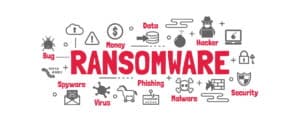Choosing a secure workspace solutions provider is not simply an IT decision; it is a business issue. The wrong choice exposes your systems to risk, wastes your budget, and frustrate your teams. But the correct provider can give assistance to your hybrid workforce while protecting data and making operations easier.
With remote and hybrid work being the norm, more and more companies are looking at cloud-based virtual workspaces. These workspaces allow employees to access a secured desktop environment from any device, anywhere. But not all service providers are created equal, and none can offer the same performance, protection, or flexibility as the leading providers like Mindcore Technologies. So, how do you decide whom to put your trust in?
Let’s break down the key factors to consider.
1. Security Should Be Non-Negotiable
Start with the basics: a secure workspace must be secure. Providers should follow a zero-trust model—meaning no user or device gets automatic access. Every connection should be verified, and every action logged. You’ll also want to make sure your provider includes core protection features.
- Endpoint isolation – Separates individual devices from the rest of the system to prevent lateral attacks.
- Threat detection – Actively monitors for unusual behavior or known attack patterns.
- Encryption at rest and in transit – Protects data whether it’s being stored or moved across networks.
Compliance support is also important. Some providers help businesses meet standards like ISO 27001, SOC-2, HIPAA, and PCI-DSS right out of the box. If your organization handles sensitive data or works in a regulated industry, this kind of built-in compliance is a must.
Modern solutions often go further by offering layered protection, which is especially useful for businesses working with external partners or distributed teams.
- Firewall management – Filters unwanted traffic and blocks intrusions before they reach endpoints.
- Intrusion detection systems (IDS) – Alerts teams when abnormal behavior suggests a breach attempt.
- Network segmentation – Divides networks into smaller, controlled zones to limit the spread of threats.
You can learn more about how compliance and governance tools work in secure workspace platforms by reviewing how they handle regulatory frameworks, access control, and audit capabilities across different industries.
2. Make Sure It Can Scale With You
Your business will grow. Your technology should grow with it. The right secure workspace provider should support scaling up or down based on your current and future needs. That includes handling more users, supporting advanced workloads, or adapting to changing security policies.
Some providers offer GPU-accelerated computing for heavy applications, and others support hybrid infrastructure, allowing on-prem and cloud-based access. If you use tools like Microsoft 365 or Azure Virtual Desktop (AVD), make sure your provider integrates smoothly with those platforms.
These types of flexible integrations are especially useful for small and mid-sized companies that want enterprise-grade tech without committing to enterprise-level costs. This is particularly helpful for businesses that need solutions tailored to their specific budget and operational size.
3. Don’t Overlook Support and Service
Even the best platform won’t help if you can’t get help when you need it. A good provider should offer hands-on onboarding, migration support, and ongoing 24/7 assistance. You’ll also want to ask about their SLAs (service-level agreements) and incident response times.
Some vendors provide white-glove service, meaning they assist you throughout the entire setup and beyond. Mindcore, for example, includes a full implementation process—from strategic assessments to managed rollouts and post-deployment optimization.
If you have a small IT team or none at all, having strong provider support can mean the difference between success and frustration.
Look into how providers assist with the actual deployment. Do they offer a structured rollout plan? Do they help manage transitions from legacy systems? These details can affect how smoothly your team adopts the new platform.
4. Governance and Visibility Matter
It’s not enough to block threats. You also need to see what’s happening in your environment. A quality provider will offer session recording, real-time monitoring, and user activity reports. These tools not only support audits but also help catch issues before they become serious.
Ask how data is tracked, classified, and managed. Can you set role-based access controls? Is there a way to isolate AI systems or limit how users interact with sensitive information? These governance features support your internal policies and help you stay ahead of industry standards.
This type of visibility becomes especially important for industries like healthcare or finance, where proving compliance isn’t optional. Being able to show that you’re meeting regulatory standards builds trust with clients, partners, and regulators.
5. Understand the Pricing Model
Secure workspace solutions don’t have to be expensive—but they should be predictable. Ask if pricing is based on users, usage, or a flat monthly rate. Some vendors charge extra for support, while others include it.
The ideal pricing model aligns with your business goals. That means no surprise fees and flexibility as you scale. Be clear on what’s included and what isn’t. That transparency makes it easier to compare providers side by side.
Budget-conscious teams often look for solutions that offer strong ROI over time. If you’re considering long-term value, it might help to explore how secure workspaces contribute to productivity, cost savings, and lower IT overhead. These benefits are even more noticeable when you’re consolidating tools and simplifying IT management.
6. Know the Red Flags
Choosing a provider means more than checking a features list. Look out for these warning signs:
- No mention of security certifications
- Limited or unclear documentation
- Lack of real customer support
- No way to test or pilot the service
- Inflexible pricing or long-term lock-ins
If a provider can’t clearly explain how their platform handles data, users, or compliance, that’s a sign to walk away. A lack of transparency in these areas usually means there are bigger issues behind the scenes.
7. Ask the Right Questions
To avoid surprises, make sure you ask specific, relevant questions during the evaluation process:
- What compliance standards does your platform support?
- How do you isolate and protect endpoints?
- Can we record and audit user activity?
- Do you support hybrid infrastructure or cloud-only?
- What’s your average response time to incidents?
Their answers will reveal whether the provider understands your needs or just offers generic solutions. Don’t hesitate to ask for real examples or case studies showing how the platform performs in similar businesses or industries.
Final Thoughts
Picking the right secure workspace solutions provider takes more than a quick Google search. It takes time, clarity, and the right questions.
Look beyond the buzzwords and focus on the essentials: security, scalability, visibility, and support. Whether you’re supporting remote workers, managing compliance requirements, or simply trying to simplify your IT, the provider you choose will play a big role in your success.
If you’re still exploring what makes secure workspace platforms powerful in the first place, it might help to revisit the basics, from their key features to their benefits for hybrid teams. The better informed you are, the more confident you’ll feel in choosing a solution that fits your team’s needs—today and into the future.
A secure workspace is more than just a product. It’s a foundation for business continuity, employee productivity, and long-term security. And the provider behind it can make all the difference.



